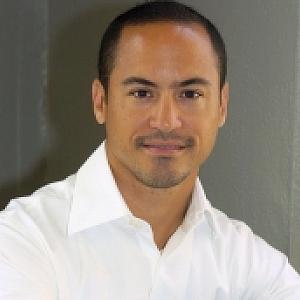
Pedro Frisneda
Health Editor

Health Editor
I’m the Health Editor of El Diario/La Prensa —the nation’s oldest Spanish language newspaper and the largest in New York City for over 96 years. I was born and raised in Caracas, Venezuela, were I obtained my bachelor degree in Journalism in 1994. I began my career eighteen years ago as a News-Producer for Televen Channel 10, the third-largest television station in his native country. After I moved to the United States I worked as Associate Editor for the weekly newspaper El Latinoamericano USA, where I developed, researched and wrote front-page stories and in-depth special investigations on diverse topics, paying special attention to the health issues of the Spanish community in New York City. I also worked as New York Correspondent for Tiempos Del Mundo, a weekly Spanish language newspaper published in fourteen Latin American Countries and the cities of Washington DC, New York and Miami. During my career, I have been honored with several awards, including four Gold Awards from the National Association of Hispanic Publications, for my outstanding articles published in the Health Section of El Diario/La Prensa. I’m a member of the Association of Health Care Journalists and currently I reside in New York City with his partner and my dog.
<div class="MsoNormal" style="margin: 0in 0in 0pt;"><div>When I was selected to be part of The California Endowment Health Journalism Fellowship program back in June 2010, I had three story ideas I wanted to develop for my fellowship projects. They involved three major health problems affecting the Latino community in the United States: health disparities of Latino women, diabetes and obesity among Mexican immigrants and Latinos affected by HIV/AIDS.</div></div>
<p>For many Mexican immigrants living in New York, working multiple jobs leaves little time for regular exercise. In addition, a heavy reliance on public transportation and a lack of rural areas means that physical activity is virtually nonexistent. Health experts cite this sedentary lifestyle as an emerging gateway to diabetes, especially among immigrants.</p><p>This story was <a href="http://www.reportingonhealth.org/fellowships/projects/en-una-naci%C3%B3… published in Spanish</a>. Below is the English translation.</p>
<p>For many Mexican immigrants living in New York, working multiple jobs leaves little time for regular exercise. In addition, a heavy reliance on public transportation and a lack of rural areas means that physical activity is virtually nonexistent. Health experts cite this sedentary lifestyle as an emerging gateway to diabetes, especially among immigrants.</p>
<p>With limited access to affordable fruits, vegetables and other healthy foods, Mexicans living in New York are frequenting fast food restaurants instead of farmers' markets. The result is a spike in obesity and diabetes among this immigrant group.</p><p>This story was <a href="http://www.reportingonhealth.org/fellowships/projects/en-el-reino-de-la… published in Spanish</a>. Below is the English translation.</p><p><a href="http://www.reportingonhealth.org/fellowships/projects/sedentary-country… 3: In a sedentary country </a></p>
<p>With limited access to affordable fruits, vegetables and other healthy foods, Mexicans living in New York are frequenting fast food restaurants instead of farmers' markets. The result is a spike in obesity and diabetes among this immigrant group.</p><p> </p>
<p>"It's the alcohol hangover," Gerardo Cuapio thought five years ago when he woke up thirsty and with blurred vision. National Health Journalism Fellow Pedro Frisneda tells the story of a man who was on the verge of death without knowing he had Type 2 diabetes. It's a cautionary tale for what happens to many Latin American immigrants who move to the United States, adopting a new lifestyle and diet that can contribute to developing the disease. "The Big Apple is confronting one of the worst diabetes epidemics in the nation and health authorities have declared it an emergency," with Hispanics suffering disproportionately. </p><p> </p>
<p>"It's the alcohol hangover," Gerardo Cuapio thought five years ago when he woke up thirsty and with blurred vision. National Health Journalism Fellow Pedro Frisneda tells the story of a man who was on the verge of death without knowing he had Type 2 diabetes. It's a cautionary tale for what happens to many Latin American immigrants who move to the United States, adopting a new lifestyle and diet that can contribute to developing the disease. "The Big Apple is confronting one of the worst diabetes epidemics in the nation and health authorities have declared it an emergency," with Hispanics suffering disproportionately.</p><p>This story was <a href="http://www.reportingonhealth.org/fellowships/projects/una-vida-nueva-pe… published in Spanish</a>. Below is the English translation.</p><p><a href="http://www.reportingonhealth.org/fellowships/projects/kingdom-fats-and-… 2: In the kingdom of fats and sugar</a></p><p><a href="http://www.reportingonhealth.org/fellowships/projects/sedentary-country… 3: In a sedentary country </a></p>
<p><p>Health authorities have declared the United States on alert, in response to increasing cases of type 2 diabetes in the country. Official reports refer to a threat of major proportions that makes a state of emergency public health, so much so that there is already talk of an emerging epidemic. The most affected are children and members of minorities, particularly Hispanics.</p>